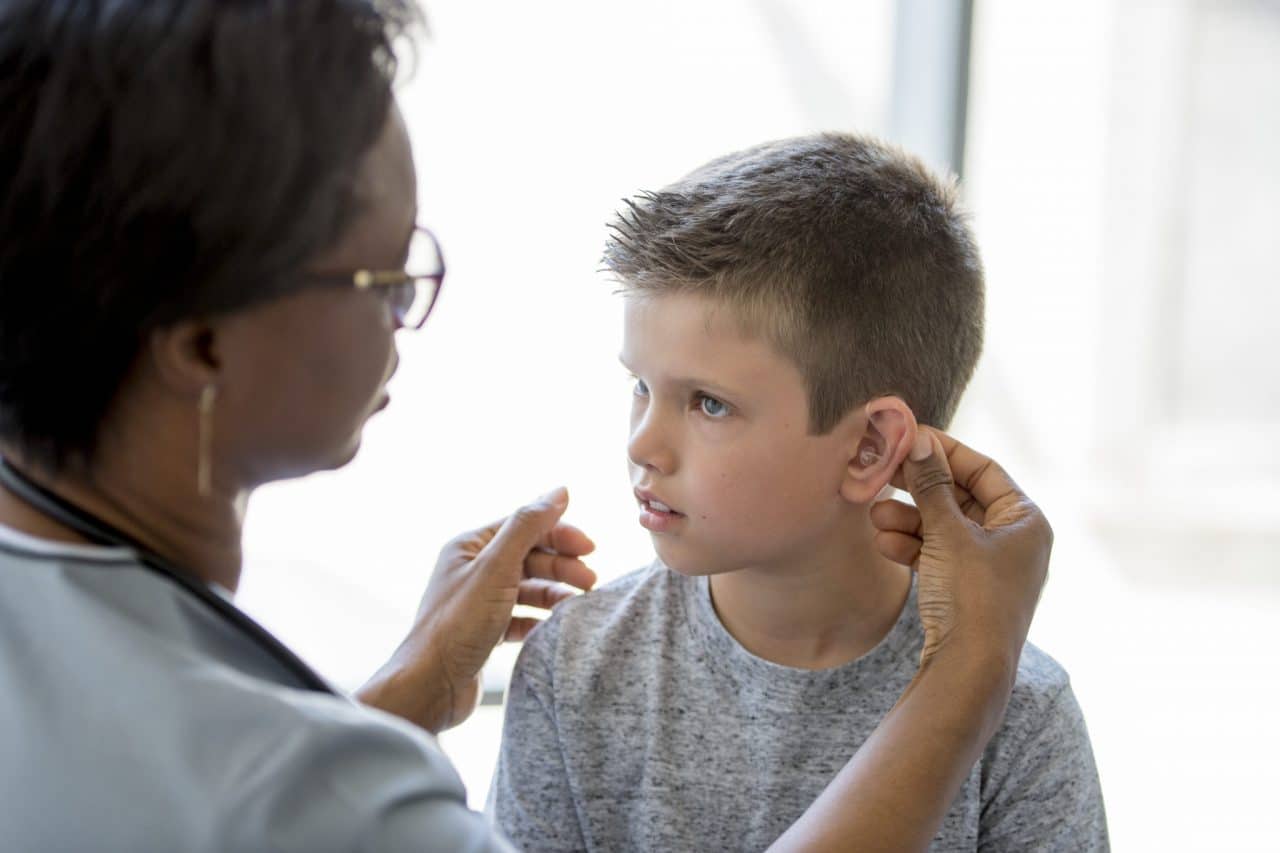Hearing aids are the most effective and common treatment option for most types of hearing loss, and they are extremely useful for both children and adults alike. Since children’s language and social skills have not fully developed as adults’ have, getting the highest quality of sound possible delivered to your child’s ear is a top priority.
Pediatric Hearing Loss
Getting a child with hearing loss immediate treatment is vital to his or her developmental, learning and behavioral abilities. Treatment options will be based on the type, severity and frequency of your child’s hearing loss. A pediatric hearing aid doctor will offer treatment guidelines after learning about your child’s medical history and doing a complete hearing assessment.
Hearing Aid Styles

There are several styles of hearing aids for adults, but children are typically fitted with behind-the-ear (BTE) hearing aids. BTE hearing aids have a casing, which sits behind the ear and houses all the electronics. The casing connects to the ear canal with a thin, clear tube or ear mold.
These hearing aids are the most powerful and effective for relaying consistent, understandable sound. Due to their reliability and power, they are considered the best option for children whose language skills development is a higher priority than cosmetic concerns. Behind-the-ear hearing aids can benefit patients with mild to severe hearing loss.
In some cases, especially in older children whose language is mostly developed, a pediatric audiologist may suggest a receiver-in-the-ear (RITE) models of hearing aids for your child. A RITE hearing aid consists of a tiny housing containing all electronics except the receiver, which is positioned behind the ear. A thin wire connects the housing to the receiver, which is worn in the concha (bowl-shaped portion) of the ear. It’s a small and discreet unit but powerful enough for treating mild to moderately severe hearing loss.
Hearing Aid Accessories
Along with your child’s hearing aids, there are a number of important accessories that can improve language and learning. Children and adults alike commonly use classroom-specific hearing aid accessories, as classes and lecture halls prove to be some of the hardest places to focus for those with hearing loss.
Microphones are very small, subtle devices that are designed to be placed near a speaker or clipped to a teacher’s shirt. They allow a teacher’s words to be wirelessly streamed directly to the student’s ears.
For older children who understand their hearing loss, wireless remote control accessories and apps allow for precise hearing aid adjustments without having to touch the tiny and delicate controls on the hearing devices themselves. Other similar accessories can allow your child to wirelessly connect directly to important equipment like televisions, cellphones and computers, which will help them relate more easily to their peers and family members.
Call The Georgia Hearing Institute at (478) 741-1800 for more information or to schedule an appointment.
